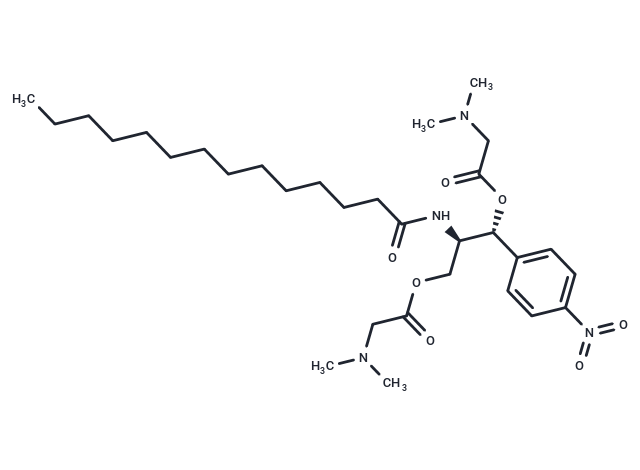Shopping Cart
- Remove All
 Your shopping cart is currently empty
Your shopping cart is currently empty

LCL521 inhibits lysosomal acid sphingomyelinase (ASMase).LCL521 is an acid ceramidase (ACDase) inhibitor.

| Pack Size | Price | Availability | Quantity |
|---|---|---|---|
| 25 mg | $987 | 6-8 weeks | |
| 50 mg | $1,360 | 6-8 weeks | |
| 100 mg | $2,190 | 6-8 weeks |
| Description | LCL521 inhibits lysosomal acid sphingomyelinase (ASMase).LCL521 is an acid ceramidase (ACDase) inhibitor. |
| In vitro | LCL521 (1 µM) effectively inhibited ACDase in MCF7 cells, but the effects were transient. LCL521 (10 µM) caused a profound decrease of sphingosine and an increase of ceramide, but additionally affected the processing and regeneration of the ACDase protein, with biphasic and reversible effects on the expression of ACDase, which paralleled the long-term changes of cellular sphingosine and ceramide. The higher concentrations of LCL521 also inhibited Dihydroceramide desaturase (DES-1). In summary, LCL521 exhibits significant effects on ACDase in a dose and time-dependent manner.[2] |
| In vivo | When PDT-treated SCCVII cells are used to vaccinate SCCVII tumor-bearing mice, adjuvant LCL521 treatment (75 mg/kg; i.p.) resulted in marked retardation of tumor growth. This effect can be attributed to the capacity of LCL521 to effectively restrict the activity of two main immunoregulatory cell populations (Tregs and myeloid-derived suppressor cells, MDSCs) that are known to hinder the efficacy of PDT vaccines. The interaction of LCL521 with PDT-based antitumor mechanisms is dominated by immune system contribution that includes overriding the effects of immunoregulatory cells but could also include a tacit contribution from boosting direct tumor cell kill.[3] |
| Molecular Weight | 592.77 |
| Formula | C31H52N4O7 |
| Cas No. | 1226851-11-1 |
| Smiles | [C@@H]([C@H](NC(CCCCCCCCCCCCC)=O)COC(CN(C)C)=O)(OC(CN(C)C)=O)C1=CC=C(N(=O)=O)C=C1 |
| Relative Density. | 1.093 g/cm3 (Predicted) |
| Storage | Powder: -20°C for 3 years | In solvent: -80°C for 1 year | Shipping with blue ice. | |||||||||||||||||||||||||||||||||||
| Solubility Information | DMSO: 148.5 mg/mL (250.5 mM), Sonication is recommended. Ethanol: 90.0 mg/mL (151.8 mM), Sonication is recommended. | |||||||||||||||||||||||||||||||||||
Solution Preparation Table | ||||||||||||||||||||||||||||||||||||
Ethanol/DMSO
| ||||||||||||||||||||||||||||||||||||

Copyright © 2015-2025 TargetMol Chemicals Inc. All Rights Reserved.